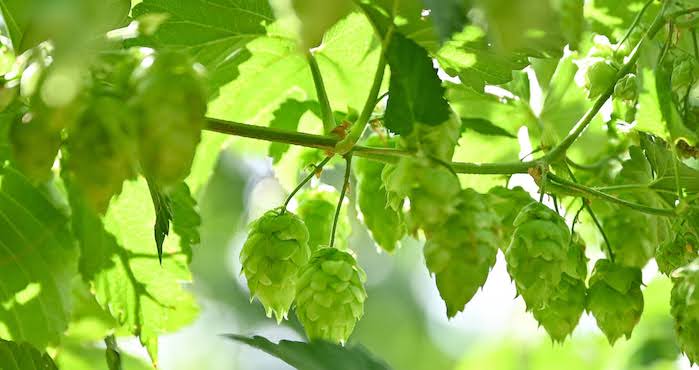Hop Science Newsletter (January 2016)
In this issue: an assessment of lupulin glands, genomic studies in hops, and hop flavoromics.

LUPULIN GLANDS IN FULL BEAUTY
Scanning electron microscopy (SEM) is a powerful way to see exact details in a nano or micro scale. This work used SEM to assess lupulin glands from different hop varieties. These pictures show the changes and development of lupulin gland during the growing season. For each hop variety, 50 micrographs were visually assessed and compared based on lupulin surface topography, degree of fullness, and volume. The gland features were correlated and clustered against the chemical properties of the corresponding variety. The cluster data confirmed there are larger gland volumes in the bittering hop varieties independent of the country of origin. In further research it would be valuable to investigate the same hop variety grown in different countries and to determine the effect of environmental and handling conditions on the structural features of the lupulin glands.¹
GENOMIC STUDIES IN HOPS
Breeding hop varieties for higher yield, disease resistance and improved brewing characteristics is a lengthy and expensive process. Use of new genomic tools enables greater precision in selection as well as reduced dependence upon lengthy phenotypic evaluations. This research group performed genomic studies in hops that looked at multiple quantitative traits to identify potential molecular markers for use in selection. Quantitative trait loci (QTL) studies focused upon the identification of SNP markers linked to downy mildew resistance. Genome-wide association studies (GWAS) looked for markers linked to yield, alpha and beta acid levels, cohumulone levels, hop storageability, oil amounts, and levels of caryophyllene, limonene, humulene and myrcene. They were successful in identifying a total of 98 SNP markers as significantly associated with one of the 10 traits. An additional outcome of this study was the identification of a set of 7 SNPs that effectively differentiated all 116 varieties.²
HOP FLAVOROMICS – THE SKY IS THE LIMIT
The continued release of novel hop varieties with uniquely identifiable organoleptic characters is
evidence that the flavour potential of hops has not been fully explored. Plus, the genetic basis of hop organoleptic chemistry is relatively poorly understood. A mapping cross containing 166 genotypes has been established into two replicated field trials (Tasmania and Victoria, Australia), separated by ~5° latitude. To date we have collected two years of data on various parameters. Such data allows analysis of genetic variation and genotype by site interactions. However, the ultimate aim for the study is to obtain an extended chemical phenotype of hop flavour volatiles, polyphenols, glycosides, laboratory scale beer volatile SPME profiles, and to integrate this with organoleptic data. Successful completion of this hop flavoromics study will allow the identification of quantitative trait loci (QTL) in hop directly associated with beer organoleptic traits.³
EVENTS
Happy Hoppy Day
February 15th is Happy Hoppy Day. Use this interactive half day program to get to know your hops with your senses.
49. Technologisches Seminar Weihenstephan 2016
How good is your German? If you are up for it here you will learn the newest results from the Weihenstephan Brewing Research Projects.
Beer Attraction 2016
How good is your Italian? To explore the flavor of Italian and many other craft beers come to Rimini, February, 20-23rd.



